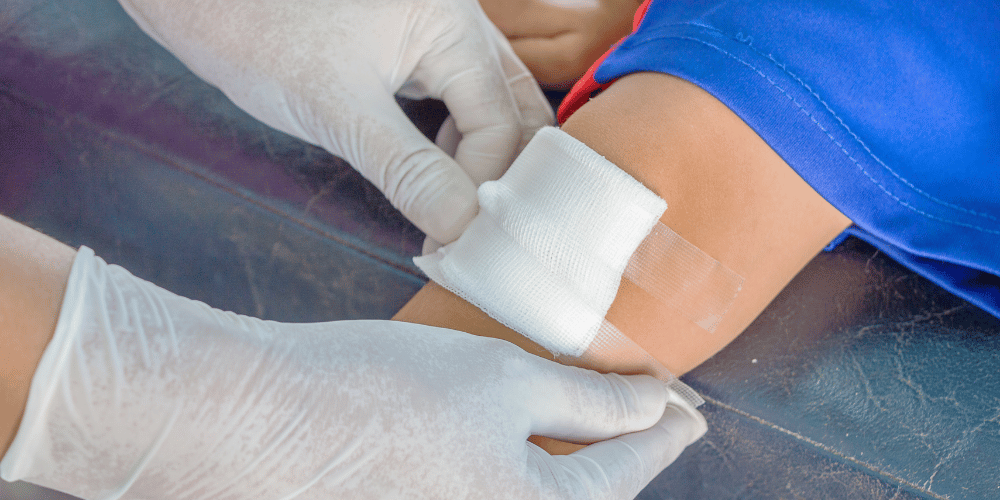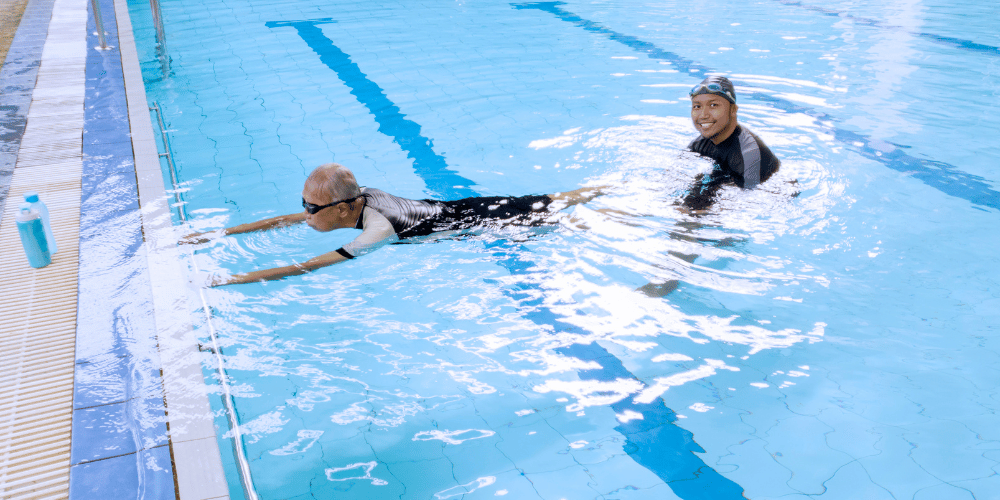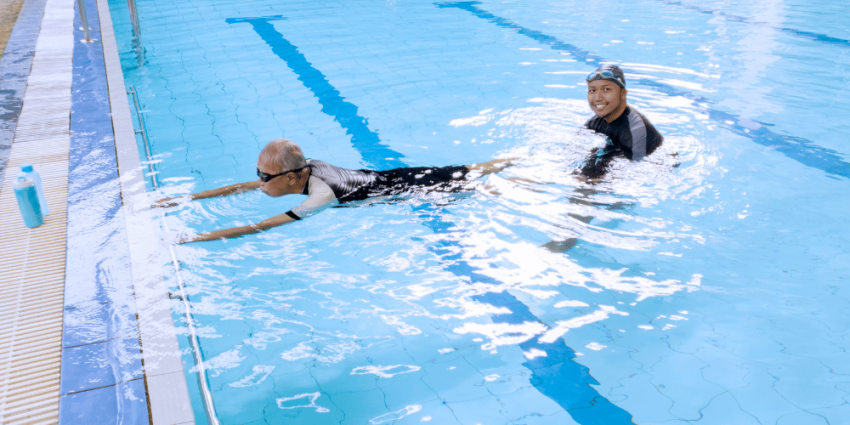If you’ve ever gone swimming in an open body of water with an open wound, you know that it’s a recipe for disaster. Not only will the water get into the wound and cause infection, but chlorine and other chemicals used to clean pools can irritate your skin and make the wound more painful. So what do you do if you have a wound and you want to go for a swim? The answer is simple: waterproofing! In this article, we’ll discuss how to waterproof a wound for swimming so that you can enjoy the water without fear of infection or irritation.
How to clean the wound
It is important to clean the wound before applying any type of waterproofing material. Clean the wound with soap and water, then rinse thoroughly. Dry the wound completely before applying any type of waterproofing material.
If the wound is severe, it may need to be cleaned with an antiseptic solution such as hydrogen peroxide or iodine. This should only be done if the wound is deep enough to cause concern for infection. After cleaning the wound with an antiseptic, rinse thoroughly and dry completely before applying any type of waterproofing material.

What kind of waterproofing bandaid to use
There are many different types of waterproofing bandaids on the market. Some are designed for specific activities, such as swimming, while others are more general purpose. When choosing a waterproofing bandaid, it is important to consider the activity you will be participating in and the conditions you will be exposed to.
For swimming, a good option is a bandaid that is specifically designed for water activities. These bandaids typically have a thicker adhesive that can withstand being submerged in water. They also often have a textured surface that helps them stay in place even when wet.
If you will be exposed to other elements, such as wind or sun, you may want to choose a bandaid that has additional features to protect your wound. Bandaids with sunscreen built-in can help prevent sunburn, while those with an antibiotic ointment can help prevent infection.
No matter what type of waterproofing bandaid you choose, be sure to follow the instructions on the package carefully. This will ensure that your bandaid stays in place and does its job properly.
How to apply the bandaid
It’s easy to forget about your wound when you’re enjoying a swim, but it’s important to take care of it to prevent infection. Here’s how to apply a bandaid so that it stays on in water:
– Start with clean, dry skin. Gently pat the area around the wound with a towel to remove any moisture.
– Apply a layer of antibiotic ointment to the wound. This will help keep the bandage from sticking and will also protect the wound from bacteria.
– Place the bandage over the wound, making sure that it’s covering all of the affected area. Be sure to smooth out any air bubbles, as these can cause the bandage to come loose.
– To secure the bandage, use waterproof tape or wraps. These are available at most drugstores and will keep your bandage in place even when wet.
When to see a doctor
If you have a wound that is more than a quarter-inch deep, you need to see a doctor. Also, if the wound is on your face, you need to see a doctor. If the wound is bleeding and won’t stop, you need to see a doctor. If the wound starts to get red or swollen, you need to see a doctor.
If you experience any signs of infection such as fever, redness, swelling, warmth around the wound, drainage of a yellow or greenish-colored liquid or increasing pain, you need to see a doctor. If you have diabetes or any other condition that affects your ability to heal, it is important that you get medical advice.
What is a waterproof wound?
A waterproof wound is a type of wound that is covered with a waterproof material, such as a Band-Aid, in order to prevent water from coming into contact with the wound. Waterproofing a wound is important for keeping the wound clean and preventing infection. It is also important for people who have allergies or sensitivities to water.
Waterproof wound care products are available in many pharmacies and drug stores. Such products typically include a waterproof sealant, such as a clear plastic or silicone bandage, which is applied over the wound to keep water out.
What are the benefits of a waterproof wound?
There are many benefits of waterproofing a wound before swimming. Waterproofing helps to keep the wound clean and free of bacteria, as well as keeping it from getting wet and irritated. It also helps to prevent the wound from drying out and cracking, which can lead to infection.
Waterproofing can also help to reduce pain and itching associated with the wound, as well as helping to promote healing. It can also help to protect the wound from further damage due to friction when swimming. Finally, waterproofing can help to provide a barrier against infection, by keeping out contaminants from the water.
How to make a waterproof wound?
If you have a wound that is still healing, it’s important to keep it clean and dry. Waterproofing your wound will help to keep bacteria and other contaminants out, while also keeping the wound moist so that it can heal properly. There are a few different ways that you can waterproof a wound, depending on the size and location of the wound.
If you have a small wound, you can use a bandage or plaster to cover it. Make sure that the bandage or plaster is sealed around the edges so that water cannot get in. You can also buy special waterproof bandages from most pharmacies.
For larger wounds, you can buy special waterproof dressings from your pharmacy. These dressings are designed to protect wounds from getting wet, while also allowing them to breathe so that they can heal properly.
Once your wound has healed, you can start using regular bandages again. However, if you plan on swimming or being in water for extended periods of time, it’s a good idea to apply a layer of petroleum jelly or other waterproof barrier over the top of your bandage to prevent water from getting in and causing irritation.

How to care for a waterproof wound?
If you have a wound that is still healing, it is important to take extra care when swimming. Water can carry bacteria that can infect your wound, so it is important to keep it clean and dry.
Here are some tips for caring for a waterproof wound:
-Apply an antibiotic ointment to the wound before swimming. This will help protect it from infection.
-Cover the wound with a waterproof bandage or dressing. Make sure the bandage is secured so that water cannot get under it.
-Change the bandage or dressing as soon as possible after swimming, and wash the wound with soap and water.
-Watch for signs of infection, such as redness, swelling, or pus. If you see these signs, contact your healthcare provider right away.
Conclusion
Waterproofing a wound for swimming is not always an easy task, however with the proper preparation and protection, it can be accomplished. Taking precautions such as using waterproof bandages or sterile plastic wrap to cover any open wounds will help keep them protected while swimming in bodies of water. It’s also important to remember that no matter what type of protection you use, fresh water should be used instead of saltwater when cleaning the wound afterwards. Following these tips can help ensure your wounds stay safe and dry during any swims!










Leave a Reply